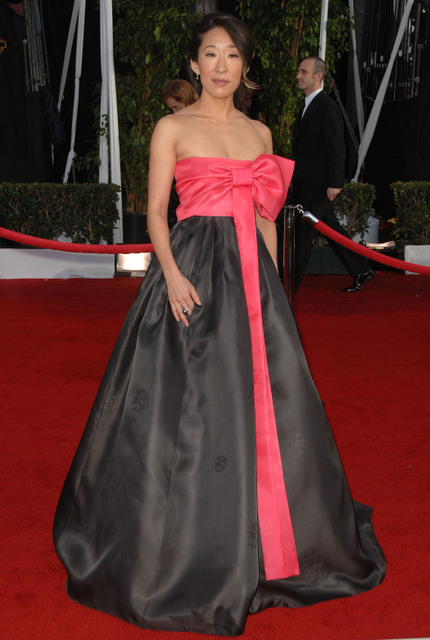






The same exact alterations occur to many other Asian ethnic dresses such as the kimono and today they still use the kimono sleeves on sweaters and loose flowing tops for women.


The more dominant the cultural dress are in Western modern fashion, the more it shows their relationship with the Asian countries. China and Japan were the two most influential countries on Western fashion because they both have "long history of cultural exhange which would explain why they had such a strong impact on modern fashion," (Yu, Kim, Lee and Hong 107). I noticed how many of our clothes today have some sort of Asian ethnic dress influence such as the kimono sleeves, the side buttons of the cheongsam (qipao), and the high cinch around the bust area from the hanbok. Clearly we still have a reliance on Asian ethnic dresses for Western modern fashion which indicates our need for cultural exchange and global interactions
Though Asia has become Westernized to a large degree, it is still possible to witness its traditions and cultures. Travelers to Asian nations will enjoy the opportunity to see people wearing their traditional garb.
China and Hong Kong
Traditional outfits that can be seen in China and Hong Kong today include the qipao or cheongsam for women and the hanfu, which can be worn by either men or women. The qipao/cheongsam is the dress popularly associated with Chinese clothing. It can be either long or short and has the high clasped collar. The hanfu is a robe similar to a Japanese kimono. Slip-on cloth shoes are worn by men and women.
Japan
Though Japan is a highly Westernized Asian nation, its people are still likely to be dressed in more traditional garb. Clothing worn by both men and women include the kimono robe, wide leg pants known as hakama, silk jackets called haori, overcoats or michiyuki and several types of sandals. Women will be seen with brighter-colored and patterned clothing than men.
Korea
Korean traditional dress is similar for men and women. Both wear baggy blouses called chigori. Bottoms are the baggy and wide ch'ima skirt for women and the wide leg pants called paji for men. Darumagi are robes similar to kimonos and worn for special occasions. Gat-chogori are rabbit fur-lined silk jackets for cold weather.
India
Indian attire can vary by state, but most common are the sari and the kurta pajama. Women wear the sari, colorfully patterned pieces of cloth draped around the upper body and worn over a long blouse and pants. Men wear the kurta pajama, a long -- to the knee or longer -- blouse with loose drawstring pants. Footwear is either sandals or slip-on shoes.
Philippines
In the Philippines, traditional outfits consist of a blouse for men and women, and pants or a skirt depending on gender. Men also wear reed hats known as sakalot.
Modern Fashion Influenced by Asian Ethnic Dresses
As we all know that many of the Asian countries have been heavily influenced by the western world, but this effect has also occurred to the west. With growing "cultural interchange and interaction among differing cultures, [it has] now become a part of their everyday life..." (Yu, Kim, Lee and Hong 100). As Haekyung Yu, Chanju Kim, Juhyeon Lee, and Nayoung Hong had stated in "An Analysis of Modern Fashion Designs as Influenced by Asian Ethnic Dress," "whenever symbols from a new culture, idea, or artifact are introduced, it is often dress that is most receptive to the changes..." (Yu, Kim, Lee and Hong 100), it is evident of interaction and cultural interchange when the more dominant the style of clothes is in the influenced culture. Even today we still have traces of the Asian ethnic dress influenced in western modern fashion. The hanbok, a traditional Korean ethnic dress, for example has been altered, "modified and incorporated to suit the Western lifestyle," (Yu, Kim, Lee and Hong 100).



The same exact alterations occur to many other Asian ethnic dresses such as the kimono and today they still use the kimono sleeves on sweaters and loose flowing tops for women.



The more dominant the cultural dress are in Western modern fashion, the more it shows their relationship with the Asian countries. China and Japan were the two most influential countries on Western fashion because they both have "long history of cultural exhange which would explain why they had such a strong impact on modern fashion," (Yu, Kim, Lee and Hong 107). I noticed how many of our clothes today have some sort of Asian ethnic dress influence such as the kimono sleeves, the side buttons of the cheongsam (qipao), and the high cinch around the bust area from the hanbok. Clearly we still have a reliance on Asian ethnic dresses for Western modern fashion which indicates our need for cultural exchange and global interactions
